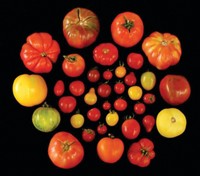Advertisement
Grab your lab coat. Let's get started
Welcome!
Welcome!
Create an account below to get 6 C&EN articles per month, receive newsletters and more - all free.
It seems this is your first time logging in online. Please enter the following information to continue.
As an ACS member you automatically get access to this site. All we need is few more details to create your reading experience.
Not you? Sign in with a different account.
Not you? Sign in with a different account.
ERROR 1
ERROR 1
ERROR 2
ERROR 2
ERROR 2
ERROR 2
ERROR 2
Password and Confirm password must match.
If you have an ACS member number, please enter it here so we can link this account to your membership. (optional)
ERROR 2
ACS values your privacy. By submitting your information, you are gaining access to C&EN and subscribing to our weekly newsletter. We use the information you provide to make your reading experience better, and we will never sell your data to third party members.
Pharmaceuticals
Newscripts
Interfering grapefruit and low-stress tomatoes
by Brianna Barbu
January 30, 2022
| A version of this story appeared in
Volume 100, Issue 4
Ruby-red alert

It’s citrus season here in the US! Sweet satsumas and crimson blood oranges are on display at grocery stores. However, if you’re taking any prescription drugs, you may want to choose your fruit carefully. Grapefruit is notorious for messing with medication.
Grapefruit and other bitter citrus berries contain high levels of furanocoumarins. This class of molecules irreversibly deactivates cytochrome P450 enzymes, which help your body break down drugs. Drugmakers usually expect a certain fraction of the active ingredients in a medication to break down before arriving at their destination in the body, so the amount in each pill is scaled up accordingly. But if the enzymes that are supposed to break the drug down are sidelined, more of it than expected will make it into your system. For some medications, this increase poses the risk of a dangerous overdose.
A single grapefruit is enough to decimate the P450s in your small intestines, and it takes over a day for the body to restore the enzymes, “so yesterday’s glass of grapefruit juice can still have a measurable effect today,” pharmacologist David Bailey tells Newscripts. Bailey accidentally discovered the effect in the 1980s while studying alcohol’s effects on a blood pressure medication. After he grabbed his wife’s grapefruit juice as a mixer to hide the boozy taste, he noticed unusually high levels of the drug in patients’ blood.
The list of drugs for which grapefruit has the potential to cause metabolic mayhem now has over a hundred entries including Xanax, Lipitor, and Viagra.
While pharmacists now apply labels to certain meds to warn against grapefruit consumption, some plant scientists are creating citrus hybrids that taste like grapefruit but have fewer furanocoumarins. Fred Gmitter, a citrus researcher at the University of Florida, developed such a hybrid, although he says that wasn’t his initial goal. “We were breeding for seedlessness and improved flavor and eating quality,” he tells Newscripts.
But it just so happened that one of his colleagues was doing a study on how grapefruit growing conditions affect furanocoumarin levels and asked him for some Florida-grown fruits from conventional varieties. “I also snuck in a few samples of some of my new hybrids,” Gmitter says. It turned out that one of the hybrids was very low in furanocoumarins and didn’t interfere with liver cells’ metabolism in a test tube study (Xenobiotica 2012, DOI: 10.3109/00498254.2012.700428). A small human study with the fruit and a sedative drug had mixed results (J. Clin. Pharmacol. 2016, DOI: 10.1002/jcph.807).
Gmitter says his hybrid still has its superior flavor as a selling point, calling it “a wonderful eating experience” for grapefruit lovers and grapefruit haters alike.
Happy little tomatoes

Speaking of changing the levels of chemical compounds in food, consumers in Japan can now buy tomatoes that have been genetically edited to boost their levels of γ-aminobutyric acid (GABA), a neurotransmitter that blocks the nerve signals associated with stress and anxiety.
“GABA is a very famous functional ingredient in Japan,” says Hiroshi Ezura, a plant molecular biologist at the University of Tsukuba and founder of Sanatech Seed, the start-up responsible for the tomatoes. While researchers debate whether GABA-enriched foods and supplements reduce stress, high-GABA coffee, tea, and chocolate are popular in Japan.
Ezura and colleagues thought that boosting GABA levels in produce would be a consumer-friendly way to introduce people to the power of CRISPR gene editing. They took a popular tomato variety and tweaked one of the genes responsible for controlling GABA production. The result, Ezura tells Newscripts, was fruit that looks and tastes “the same as the original—very tasty”—but has an average of four to five times the GABA.
To get the word out, Sanatech sent high-GABA tomato seedlings to over 4,000 home gardeners in May 2021. The company even held a contest to see who could grow tomatoes with the most GABA. The winning tomato had 20 times the GABA as its non-gene-edited counterpart. The fruits went on sale online to Japanese customers beginning in September.
Please send comments and suggestions to newscripts@acs.org.





Join the conversation
Contact the reporter
Submit a Letter to the Editor for publication
Engage with us on Twitter